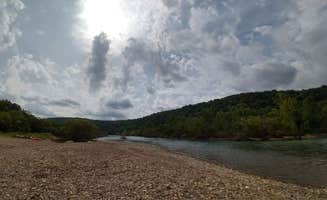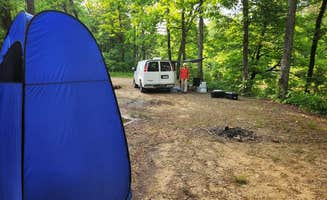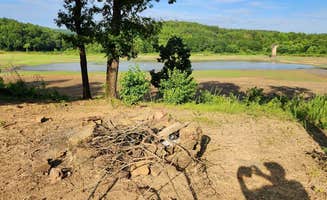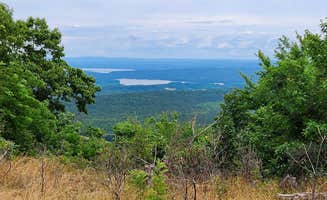Best Dispersed Camping near Witts Springs, AR
The Ozark National Forest surrounding Witts Springs, Arkansas features numerous dispersed camping options, with sites ranging from primitive clearings to established recreation areas. Sam's Throne Recreation Area, located about 25 miles northwest of Witts Springs, offers free camping with vault toilets and established fire rings in a forested setting popular with rock climbers. The Buffalo National River area includes Woolum Dispersed Area, providing riverside camping with both rocky and sandy beaches. Dispersed sites along forest roads like Adams Mountain Road and Charleston Road accommodate small campers and tents, typically featuring rock fire rings and level dirt surfaces for camping.
Road conditions vary significantly throughout the region, with many forest service roads requiring high-clearance vehicles. According to one camper at a Piney Creek WMA site, "The ATV trail has a handful of 4x4 obstacles along the way. A 1¼ mile hike takes you to a small unnamed waterfall, which may not be running during the dry season." Wildlife Management Areas like Gene Rush require specific permits purchased through Arkansas Game and Fish Commission for $5, with camping restricted to designated sites only. Cell service is patchy but available in many areas, with visitors reporting T-Mobile and AT&T coverage at various sites. Weather conditions can change rapidly, particularly during spring when road erosion and flooding may limit access.
Campers consistently praise the scenic qualities of the area, particularly sites near water features. The Woolum Dispersed Area receives high ratings, with one visitor noting it's "definitely the place to go to enjoy magnificent scenery and not be distracted by technology." Fall brings particularly beautiful conditions with cooler temperatures and colorful foliage. Many dispersed sites accommodate only small vehicles—typically one truck camper or van—though some group sites exist along Charleston Road and Middle Fork Road. Poison ivy is common in the undergrowth around many sites, and visitors should be prepared for self-sufficient camping as most areas lack drinking water, trash service, and other amenities. During hunting seasons (September through May), Wildlife Management Areas become significantly busier.








